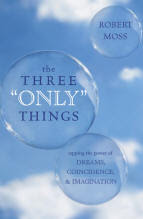
You may remember the advice from your last public speaking class to memorize your opening statement. That's not a bad idea. A lot of my clients find that once they get past the first sentence or two, their butterflies begin to fly in formation. Then they enjoy great rapport with their audiences, whether of just one person, or a room full.
Atlanta-based executive speech coach Sandy Linver expresses the purpose of your opening statement as, "to get your listeners as ready as possible to really hear your Message." To achieve this objective, you really need to think about how you can help your listeners get your message, rather than focusing on a bombardment of impressive information.
Marketing man Dan Kennedy is even more ambitious, he wants to set up his audience to be predisposed to accept his message. He accomplishes this not only through an opening statement, but through communication with his audience before his speech. Something to think about.
A good talk can begin with a story, a quote, a joke, a question, or some personal statement. That really is the speaker's decision. And you certainly can't coerce an audience into accepting your argument, you do your best to show that your interest is aligned with theirs.
What's an awkward introduction? Telling a joke or story that has no relationship with your message.
Two suggestions to open a talk or interview:
1. Tell them something you know they'll agree with. This is classic sales technique, getting the audience in a "yes" frame of mind. It's usually helpful to show that you understand their point of view, before introducing a new perspective. In some way, you can define your audience's current reality, with the goal of getting them to see the benefit of your solution.
2. Acknowledge some existing tension in the current reality. Obviously if we were already in Paradise, you might not need to be giving your talk/presentation in the first place. Explain what the problem is in terms that make it easy for the audience to see how you can help resolve it.
Here's an example of how this works.
My client whom we'll call Suzy, wants to start a mastermind group with some forward-thinking friends of hers. They admire her, but are skeptical of her idea.
She starts off by giving a quote from Napoleon Hill about the power of mastermind groups, then explains the common goals she and her group of friends share (which though they differ in specifics, in essence the goal is showing up in a bigger way in each of their lives.)
In this case, the existing reality that the speaker and the audience share, is a situation in which everyone has a similar goal, which is a desire to shine more brightly. Thus she and her audience establish agreement about what current reality looks like, she proposes a way to get everyone closer to their goals, and she borrows credibility from Napoleon Hill. Now that presentation is off to a great start. It's that easy.





